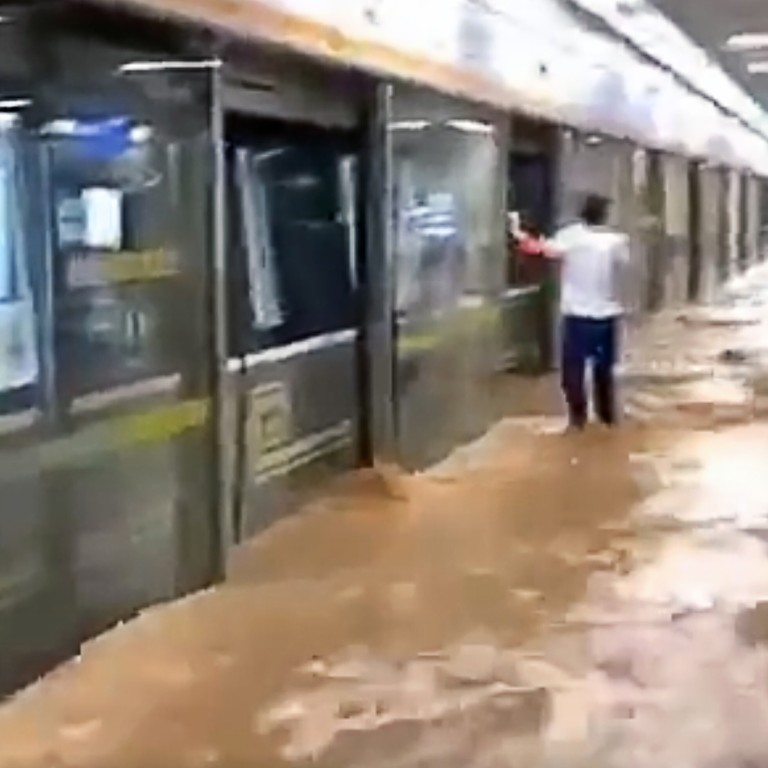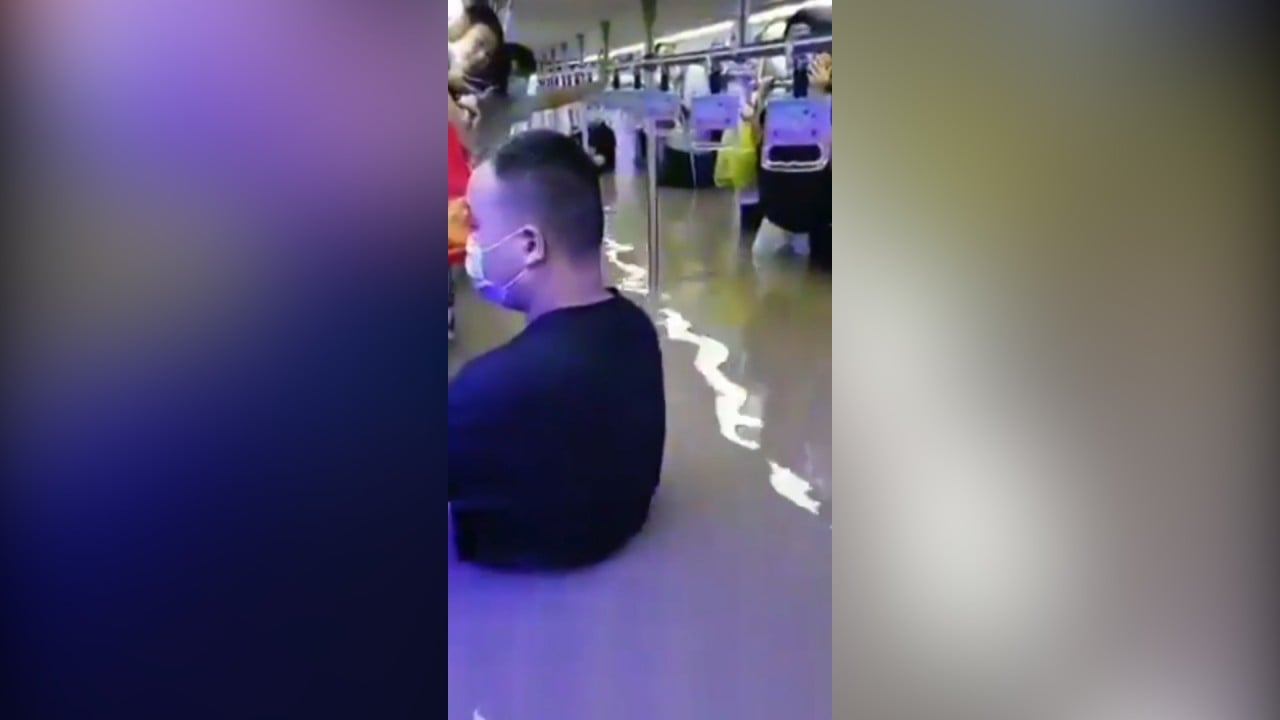
China flood survivors tell of rising water and last goodbyes as disaster claims at least 25 lives and displaces thousands
- Passengers were trapped in subway trains in Zhengzhou, some struggling to reach rescuers and others sending what they feared were final words to loved ones
- Survivors sharing their stories on Weibo are told to remove them to avoid being ‘manipulated by hostile foreign forces’, while photos and videos are deleted
For those trapped in submerged underground trains as Tuesday’s horror unfolded in the central Chinese city of Zhengzhou, it was a life-and-death matter of keeping their heads above water in the hope that help would arrive.
“We are used to ankle-level downpours in the summers,” one survivor, who was trapped on his way home on Tuesday evening, told Chinese media. “A recent flood in Zhengzhou [washed away] many cars, but it was nothing like this time, which completely annihilated everything.”
According to the Zhengzhou government, more than 500 passengers were rescued after all of the city’s rail services were suspended at 6pm on Tuesday, but chaos continued as water poured into subway stations.
Details of the horror were censored in mainland media coverage and on social media. Photographs and videos posted on Weibo, featuring unconscious bodies pulled from the water, were deleted, while survivors sharing first-hand accounts were told in their comment sections to remove them, to avoid being “manipulated by hostile foreign forces”.
A journalist at a provincial newspaper, who refused to be identified, told the South China Morning Post that their reporting on the disaster was ordered to be scaled down to focus on “positive aspects”.
The worst-affected area was on Line 5 of the subway, where many passengers were reported to be trapped for hours in submerged train compartments, waiting in hope for rescuers. Videos shared on social media by anxious passengers, themselves standing in chest-high flooding, showed water outside the train windows reaching above head height.
At 7.30pm, as desperation mounted, a woman identified as Xiaopei, whom Chinese media reported to be a CCTV programme host, sent out an appeal for help via social media.
“All emergency rescue units and firemen, please come save us!” read one of her messages, at 7.32pm. “We are trapped in a Line 5 tunnel. Please help spread this message. The water inside the train is chest-deep. I can no longer speak, please help! SOS.”
A minute later she posted: “There are hundreds of us. [To us], time is life.”

05:07
Subway passengers killed in flooding caused by heavy rain in central China
At 7.46pm, she sent her last post before her phone battery went flat, saying the water had reached her neck. The terror would last a further hour before she and fellow passengers were rescued at about 8.50pm.
Another trapped Line 5 passenger who survived the ordeal told Bingdian Weekly of her fear when water started to pour into the train.
“Others were also crying around me,” she was quoted as saying. “We made a pact together to refrain from saying anything negative. Most of us remained silent as we focused our efforts trying to connect to the world outside to get help.
“Thankfully, one lady managed to reach rescuers outside and she kept updating the rescuers about our situation. But the worst moment came around 9pm when the water level outside the train window was taller than a person. As we looked towards the tail of the train, most of the compartments were already totally under water.”
Time was running out, as was hope.
“Some were shaking, gasping and vomiting, and there were children, pregnant women and elderly among us,” she said. “Many of us were just exhausted from being drenched in the water for hours.
“I felt hopeless, preparing myself for the fact that I wouldn’t make it out alive. When I saw the water level had reached our heads, I began sending out my last goodbye messages and arranging affairs after my death with loved ones.
“Air was quickly running out. We came up with the idea to break open with fire extinguishers the higher windows towards the ceiling in the first compartment, where the water level was not so high. Ventilation improved soon after, and that was when rescuers arrived.”
Another passenger, who boarded a train on Line 1 at about 5pm on the outskirts of Zhengzhou, told ThePaper.cn that they were trapped inside the Boxue Road station with elderly and children past midnight because exits of the stations were blocked.
“The rushing water began to spill over as we were about to approach Zhengzhou East station, so the train didn’t stop, and continued ahead,” they were quoted as saying. “Halfway, the train stopped and began to backtrack to the previous station, and that’s where we got trapped.”
A Zhengzhou-based lawyer wrote in a blog that a “relevant department” had ordered them to take down content posted on private social media feeds on Wednesday morning, for fear of “causing negative influences”. The post described the lawyer’s evacuation from a Zhengzhou subway station, including passengers being required to swipe their payment cards on the way out.
“This was not ideal for passengers’ evacuation, compared with my previous experience when being evacuated from a Taiwanese subway station during an earthquake, when gates were left open,” the lawyer wrote.
Videos and photos shared on Chinese social media on Tuesday showed people struggling to stay afloat and crying for help. Some were washed away, while some appeared to be unconscious after being pulled from submerged train compartments. A number of video clips showed people who appeared to have drowned in their own vehicles.
Most of those videos had been removed from Chinese social media by Wednesday afternoon.
Missing notices began to appear, mostly for people unaccounted for after travelling on Line 5. In one, a woman appealed for information on her missing husband. “Anyone who has seen him in hospital or on his way to hospital, please contact me. I and our child are waiting for him to come home.”



